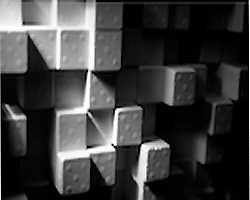
Sonic Reinforcement
This idea of putting things in their own space is a fundamental one. It’s one of the primary principles of mixing a record.
But I think there’s a tendency to overemphasize this separation concept. As important as it is to allow things to breathe by creating room for them, one has to remember that sounds often reinforce each other as well.
So taking too much away is not really a good thing. It’s important to be decisive about what really has to go.
EQ vs Dynamics Processing
Part of this tendency to over-separate elements may come from the fact that EQ is played up as the tool for this, while dynamics processing is often overlooked for this process.
The reality is, if you have a long sustaining snare or clap tail eating up all the space for the acoustic guitar, you would have to EQ the life out of that snare to get it out of the way. But by using a little dynamics processing, you may find no need for EQ at all in this regard.
And this goes both ways. In the case of the overly elongated snare tail, you would want an expander to shorten it. In the case of say an acoustic guitar stepping on a vocal—it’s very often the peaks of the strums that are jumping forward. A little compression to tame down the attack will naturally separate the acoustic guitar and vocal without any need for EQ at all.
It’s all about space. That’s the left, center, right of the pan sphere, the front to back of the imaging, the top to bottom of the frequency range, and the dynamic space.
Song Analysis
So while I’m writing this, listening to “Wavin’ Flag” by K’Naan—I’m taking note of the space, the dynamics, and the tone, and how it all comes together to create an open mix.
In the verse we hear K’Naan’s voice very forward. The ambience about the voice is primarily a delay rather than a reverb. The drums are a little behind that with a bit of plate sounding verb coming off the snare, and a good amount of the attack on the drums held down. The kick is fairly forward, but it’s in a very different sonic plane than the vocals. In the far back is an ambient pad that’s just kind of filling things out and really giving a sense of depth.
Then the piano comes in—just in front of the drums and just behind the vocal—but still very close. It’s tonally pocketed around the vocal very nicely. It doesn’t sound like any content is missing from the piano, but I suspect if we heard it in solo there would be a couple frequency notches missing. My guess is they’re right around where that guitar is primarily living—the one that shows up in the chorus. At the risk of being absolutely wrong, I’d guess just shy of 1 kHz.
It’s all of these things combined and occurring throughout the mix that allows it to cohesively fit together with a sense of openness.
Hopefully I can get Manny to weigh in with his thoughts!
Matthew Weiss is the head engineer for Studio E, located in Philadelphia. Recent credits include Ronnie Spector, Uri Caine, Royce Da 5’9” and Philadelphia Slick.
Be sure to visit the Pro Audio Files for more great recording content. To comment or ask questions about this article go here.
